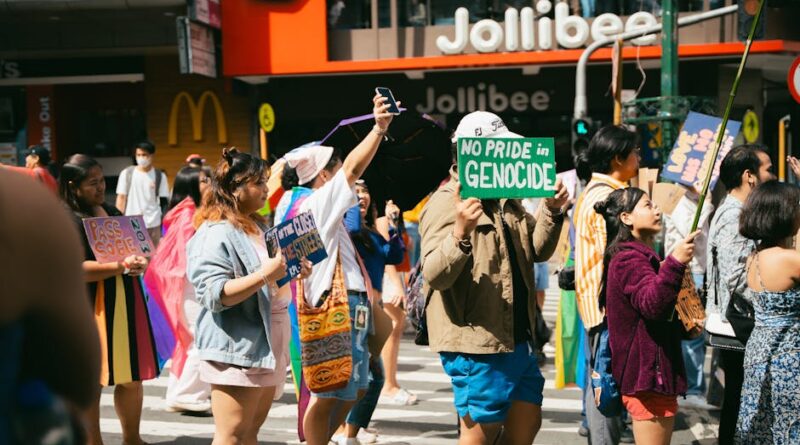The Impact of Migration on Cultural Diversity
Migration has been an intrinsic part of human history, shaping societies, cultures, and economies across the globe. As people move from one place to another in search of better opportunities, safety, or a new beginning, they bring with them their unique traditions, languages, beliefs, and practices. This phenomenon has a profound impact on cultural diversity, enriching communities while also presenting challenges and opportunities for adaptation and integration.
Historical Perspective

The history of migration and its influence on cultural diversity dates back centuries. From the Silk Road connecting East and West to the Atlantic slave trade spreading African traditions to the Americas, migration has facilitated the exchange of ideas, technologies, and cultural practices. The movement of people has led to the creation of vibrant multicultural societies, where a tapestry of traditions coexists, shaping the identity of nations.
For example, the migration of Irish and Italian immigrants to the United States in the 19th and 20th centuries brought with them their culinary traditions, music, and religious practices, which have become integral parts of American culture. Similarly, the African diaspora in the Caribbean has preserved and transformed African traditions through music, dance, and folklore, creating unique cultural expressions that reflect their heritage.
Social Integration and Cohesion

While migration contributes to cultural diversity, it also poses challenges related to social integration and cohesion. The arrival of large numbers of migrants in a host country can create tensions and conflicts, as local communities grapple with economic competition, cultural differences, and perceived threats to their identity.
However, successful integration efforts can lead to the enrichment of society by fostering cross-cultural understanding, tolerance, and cooperation. Programs that promote intercultural dialogue, language acquisition, and cultural exchange can help bridge divides and build a sense of community among diverse populations.
For instance, in Canada, the government has implemented multicultural policies that celebrate diversity and promote inclusivity. This has led to the creation of a mosaic of cultures where individuals are encouraged to maintain their heritage while participating in the broader Canadian society. As a result, Canada has become a model for successful immigrant integration, with diverse communities coexisting harmoniously.
Economic Implications

Migration also has significant economic implications, influencing labor markets, entrepreneurship, and innovation. Migrants often fill essential roles in sectors facing labor shortages, contributing their skills and expertise to the workforce. Additionally, migrant entrepreneurs bring new business ideas and create jobs, stimulating economic growth and cultural exchange.
Research has shown that migration can have a positive impact on the economy, boosting productivity and competitiveness. For example, in Silicon Valley, a hub of innovation and technology, immigrants have played a crucial role in driving entrepreneurship and creativity, leading to the development of groundbreaking technologies and startups.
However, concerns about the impact of migration on wages, job security, and social services have led to debates about the need for stricter immigration policies. While it is essential to address these challenges, it is also crucial to recognize the contributions that migrants make to the economy and society as a whole.
Cultural Exchange and Enrichment

One of the most significant benefits of migration is the cultural exchange and enrichment it brings. As people from different backgrounds interact and share their traditions, languages, and customs, they create a dynamic tapestry of diversity that fosters creativity, understanding, and mutual respect.
For example, the fusion of Mexican and American cuisines in the southwestern United States has given rise to innovative dishes like Tex-Mex, blending traditional flavors and ingredients from both cultures. This culinary fusion not only reflects the diversity of the region but also creates new culinary experiences that appeal to a broad audience.
Similarly, the influence of African music on Latin American rhythms has led to the development of genres like salsa and samba, which incorporate elements of African percussion and dance. This cross-pollination of musical styles has created vibrant cultural expressions that resonate with audiences worldwide, transcending borders and language barriers.
Challenges of Cultural Preservation
While migration enriches cultural diversity, it also presents challenges related to the preservation of traditional practices and languages. As migrants adapt to their new environment, they may face pressures to assimilate and conform to the dominant culture, leading to the erosion of their heritage and identity.
In many cases, indigenous languages and traditions are at risk of disappearing as younger generations prioritize mainstream education and employment opportunities over cultural preservation. Efforts to revitalize and promote indigenous languages and practices are crucial to maintaining the diversity and richness of cultural heritage for future generations.
For example, in Australia, indigenous communities are working to preserve their languages through language revitalization programs, cultural festivals, and intergenerational knowledge sharing. These initiatives not only help preserve linguistic diversity but also strengthen cultural identity and pride among indigenous peoples.
Impact on Social Dynamics
The impact of migration on cultural diversity extends beyond economic and cultural dimensions to influence social dynamics and power structures within societies. As migrant populations grow and diversify, they challenge existing social norms, values, and institutions, prompting debates about identity, citizenship, and belonging.
In Europe, the influx of refugees and asylum seekers in recent years has sparked discussions about multiculturalism, national identity, and social cohesion. The integration of diverse migrant communities into European societies has raised questions about the limits of tolerance, the rights of minorities, and the role of the state in promoting inclusivity.
These debates have led to the rise of populist movements and nationalist sentiments in some countries, fueling xenophobia, discrimination, and social unrest. It is essential to address these challenges through inclusive policies, education, and intercultural dialogue to promote understanding, empathy, and solidarity among all members of society.
Future Trends and Considerations
As migration continues to shape cultural diversity, it is essential to consider future trends and challenges that may arise. Climate change, political instability, and economic disparities are likely to drive more people to migrate in search of better opportunities and safety, leading to increased cultural exchange and adaptation.
Technological advancements, such as social media and digital platforms, are also facilitating cross-cultural communication and collaboration, enabling people to connect and share their experiences globally. This interconnectedness presents new opportunities for cultural exchange and understanding, bridging geographical and cultural divides.
However, the increasing interconnectedness of the world also poses challenges related to the preservation of cultural heritage, the protection of indigenous knowledge, and the promotion of cultural diversity. It is crucial to safeguard cultural rights, promote intercultural dialogue, and support initiatives that preserve and celebrate diversity in all its forms.
Common Misconceptions
One common misconception about the impact of migration on cultural diversity is that it leads to homogenization and the erasure of distinct cultural identities. While migration does contribute to cultural exchange and adaptation, it also fosters the preservation and revitalization of traditional practices and languages.
Another misconception is that migration negatively impacts the host country’s economy and social fabric. While there are challenges associated with the integration of migrant populations, research has shown that migration can have a positive impact on innovation, entrepreneurship, and cultural enrichment, leading to economic growth and social cohesion.
Conclusion
In conclusion, the impact of migration on cultural diversity is a complex and multifaceted phenomenon that influences societies in profound ways. From historical migrations shaping the cultural landscape to contemporary movements fostering diversity and exchange, migration plays a crucial role in shaping our world.
As we navigate the challenges and opportunities presented by migration, it is essential to recognize the importance of cultural diversity in enriching our communities, fostering understanding, and promoting inclusivity. By embracing our differences and celebrating our shared humanity, we can create a more harmonious and interconnected world where cultural diversity is valued and preserved.
Let us continue to explore, learn, and engage with diverse cultures, recognizing the beauty and richness that migration brings to our societies. Together, we can build a more inclusive and vibrant world where every individual is respected and celebrated for their unique contributions to the tapestry of humanity.




